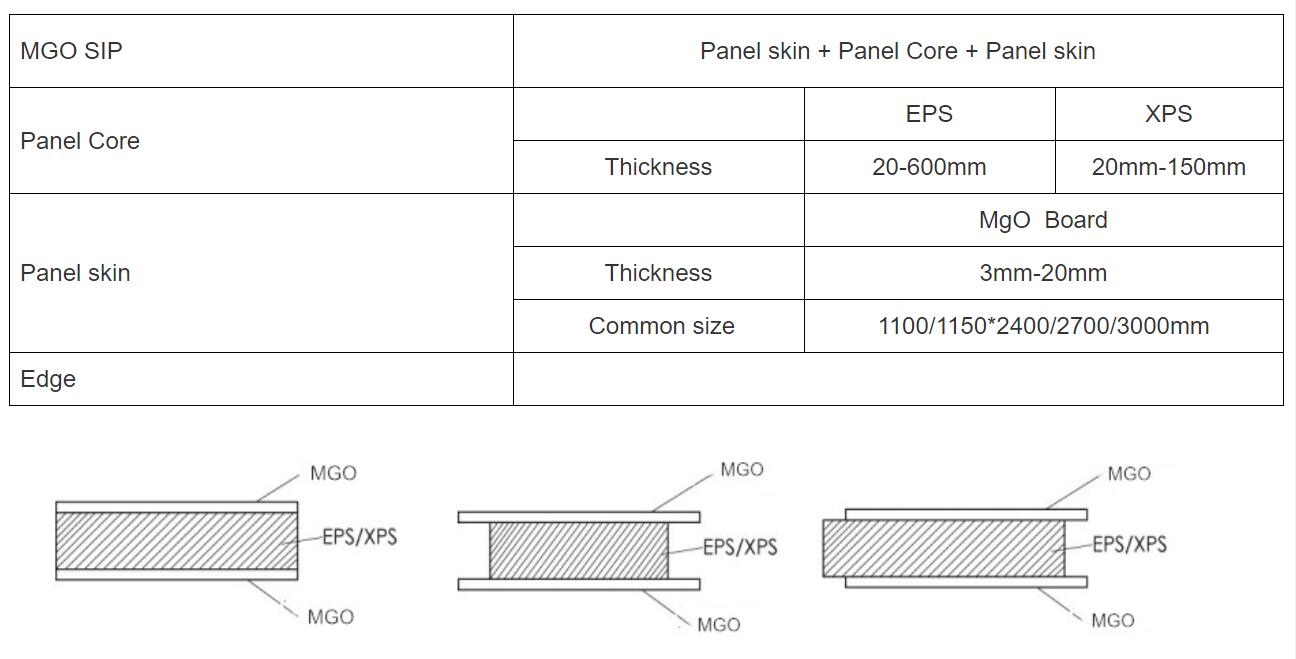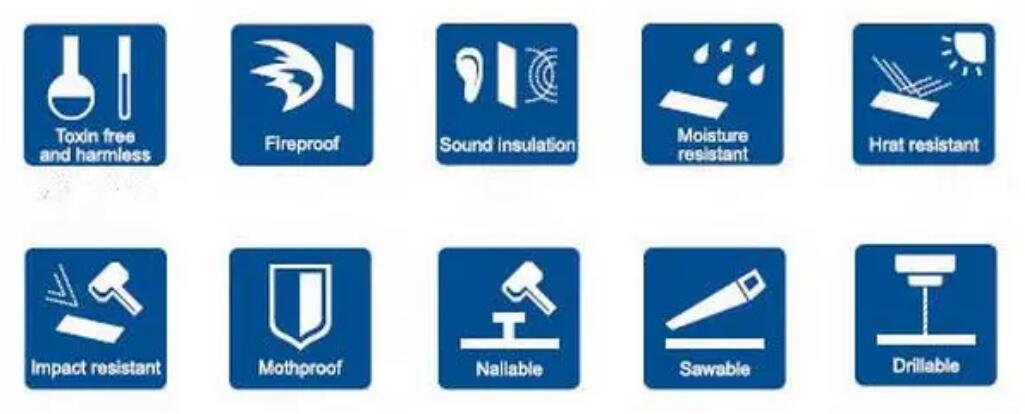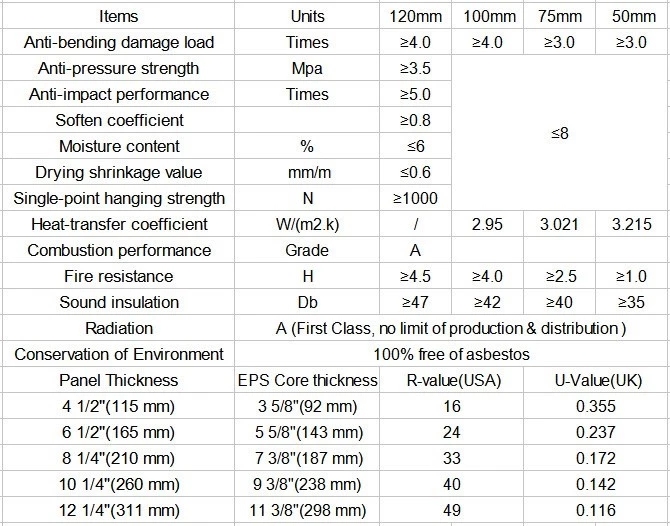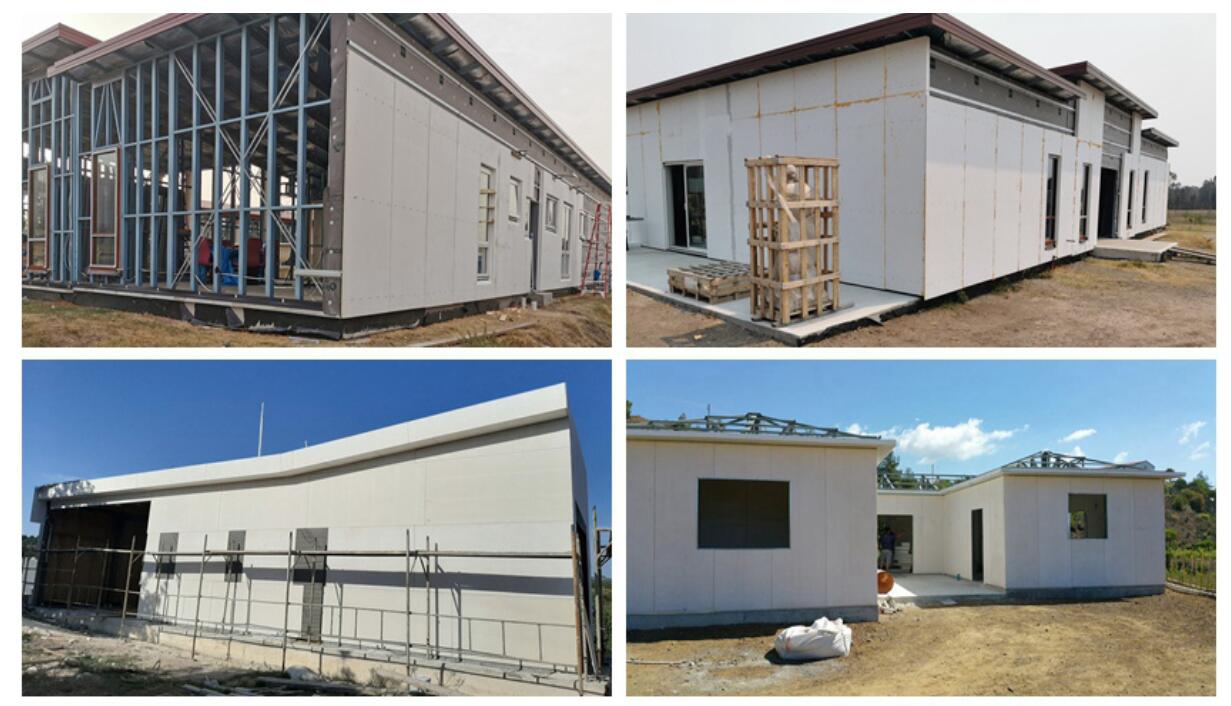Product Description:
Structural Insulated Panels – SIPS are an advanced method of construction, offering superior insulation, structural strength and air-tightness over traditional construction methods or systems. SIP panels are used in floors, walls and roofs for residential, industrial, educational and commercial applications, providing ecologically friendly and energy efficient buildings.
Material options:
Panel skins options include
Magnesium Oxide boards
mgo sulfate board(MgSO4)
Fiber cement board (FCB)
Oriented strand board(OSB)
Insulation core options include
Expanded Polystyrene(EPS)
Extruded Polystyrene(XPS)
Poly Urethane (PU)
Polyisocyanurate(PIR)
Polyurethane (PUR)
Specification:
Common size: 1100mm X 2400mm
Largest width: 1200mm, adviced 1100mm
Length: 2400mm, 2700mm, 3000mm, option is available
EPS Thickness:20-600mm
XPS Thickness:20-150mm
Mgo board thickness:3-20mm
EPS Density: 15-25KG/M3

Features:
1.Anti-earthquake with light quality: In view of its weight per unit area is only 1/10 of red brick wall, the product has good anti-earthquake performance. It can be used at low-rise building and high-rise building, and it is preferred to be used at workshop with steel frame structure. It can replace the color steel plate with its better performance.
2.Fast and convenient operation: It can be installed by board or combination with the dry method, and the product can be nailed, cut, planed, drilled and sticked.
3.Low comprehensive cost: The product is made of agricultural and industrial wastes, so the production cost is low. With the low load of girder and short construction period, it can reduce over 20% of engineering cost after compared with solid brick and hollow brick.
4.Energy-saving and environmental protection: The production processing need no high temperature and high pressure. Being a green environmental-protection energy-saving building materials, the product has no toxicity, harm, pollution and radioactivity.
5.Increasing the usage area: Under the same condition of heat-preserving and sound insulation, with the thinner plate, the product can increase over 10% usage area after compared with the same building.
6.Having the following features: fireproofing, water-proof, anti-impact, acid & alkali resistant and anti-aging.

Product comparison:
OSB SIPs are a familiar material on building sites,what are the major difference between Mgo SIPs and OSB SIPs? There are two important differences between Mgo SIPs panels and OSB SIPs panels.
-R-Value Both the Mgo panel skin and EPS foam core have very high thermal insulating values. In other words, the MgO panel skin is a very effective and fire resistant insulating material on its own, and paired with EPS foam makes a very versatile and high R-Value insulated building panel product. If you relate this test information to that of a cold winter day, the cold temperature needs to penetrate the Mgo panel skin prior to passing through the EPS foam core.
-Fire resistance Mgo panel skin when applied directly with a 1100C torch flame for 45 minutes will not burn, while limiting the heat transferred. One side of the panel will be 1100C while the opposite side will only reach a max of 134C over 45 minutes. We would not recommend a similar torch flame test with OSB for obvious reasons.

Application:
SIPs are prefabricated systems used primarily for walls and roofs. SIPs employ composite materials, reduce waste through modular construction methods, achieve high insulation values, and may be used instead of many conventional building methods. It can be used as a construction fireproof wall, light weight movement wall, inner material of warm keeping for simple mobile house, cold storage, warm-keeping houses . It also widely applied in common steel structure, prefabricated house and etc, which comes from industiral plants, commerical buildings, hospitals and so on.

Contact: Peter Chang
Phone: +86-13933858520
Tel: +86-13933858520
Email: manager@thunder-international.com
Add: No.606, YSG Office Building, West Road of Zhonghuan, Airport Economic Zone, Tianjin, China
We chat
